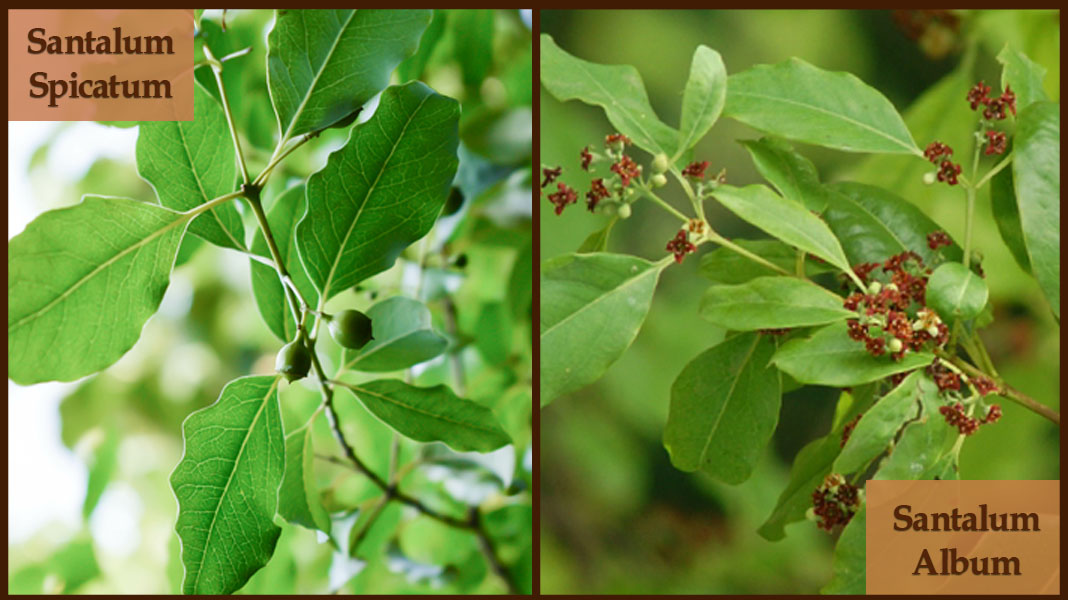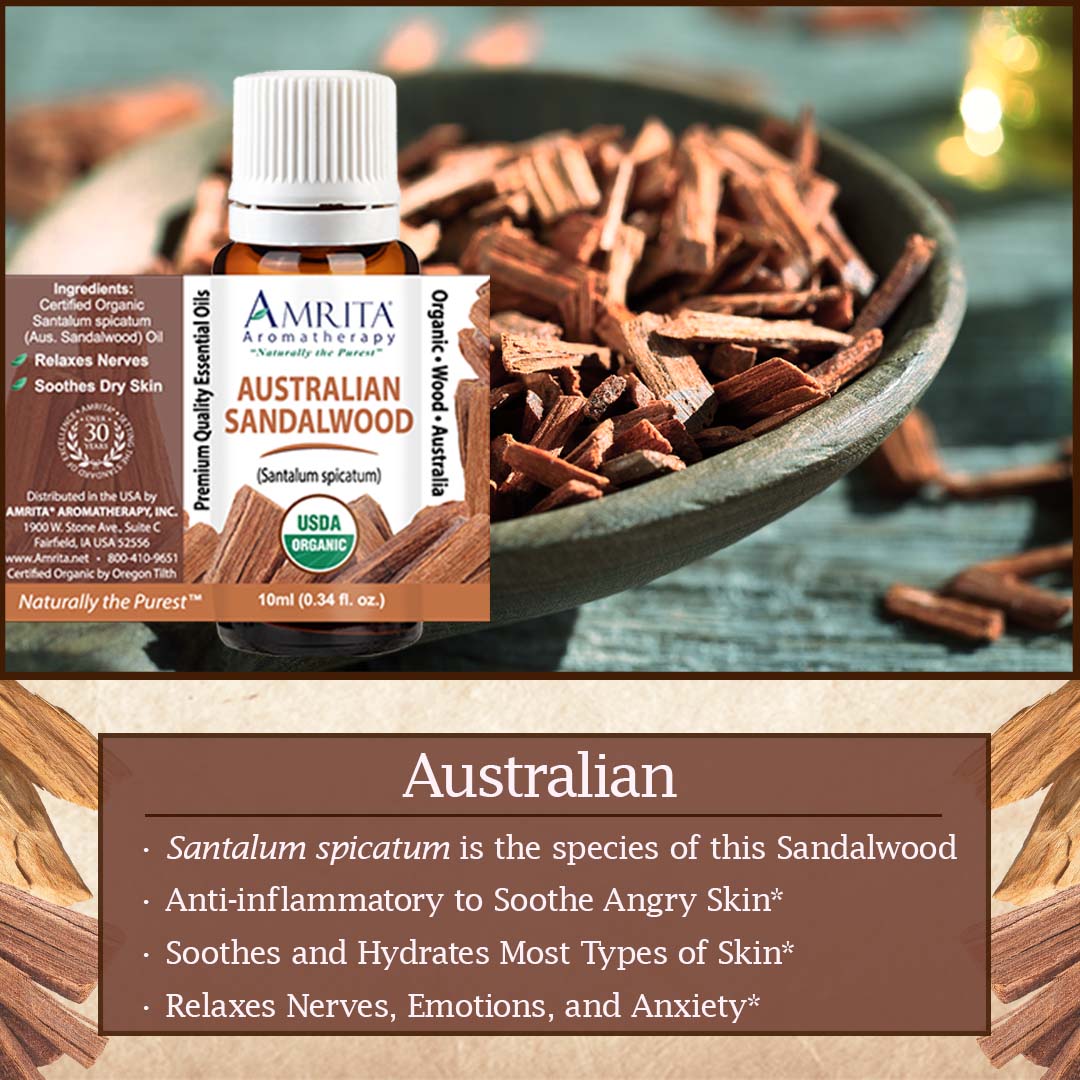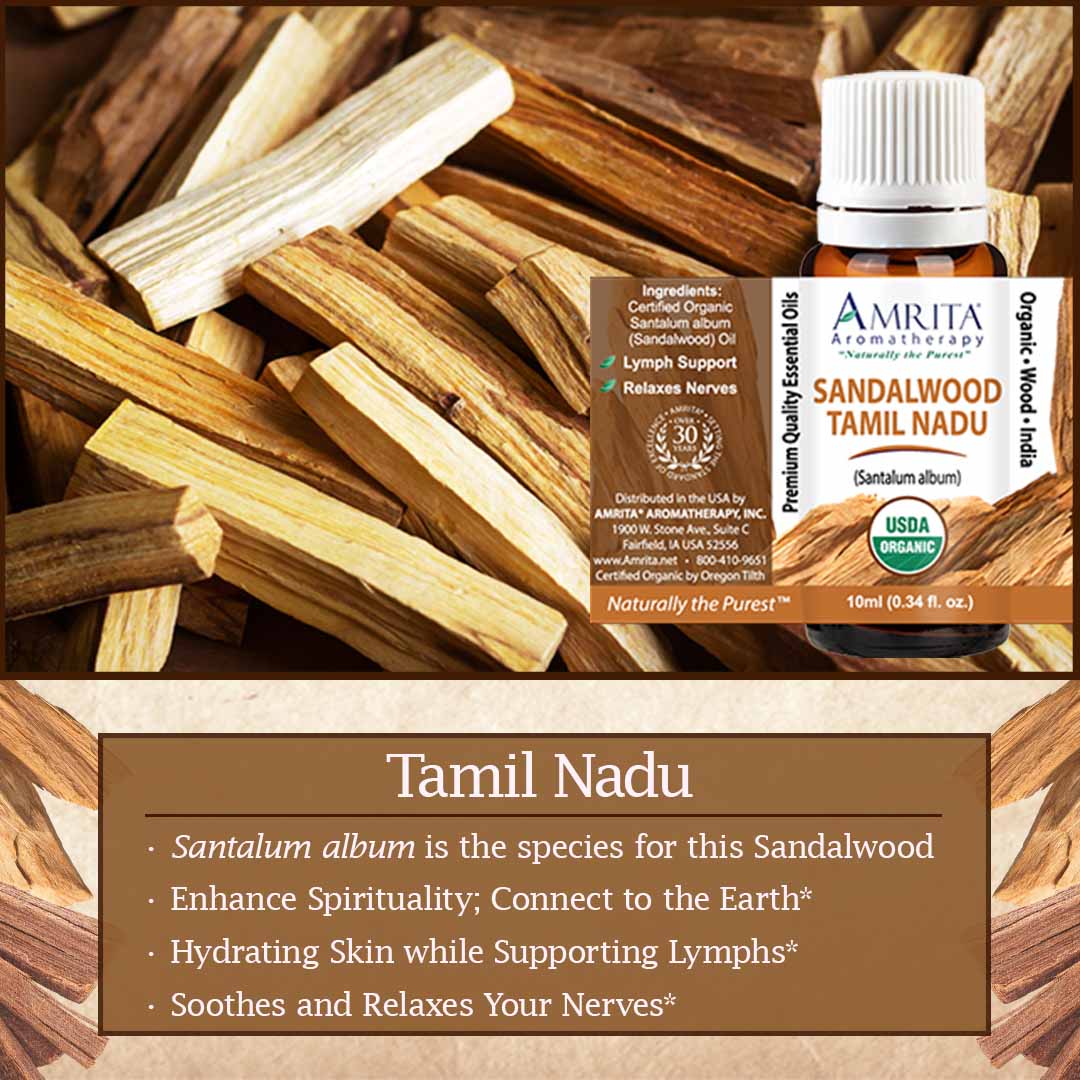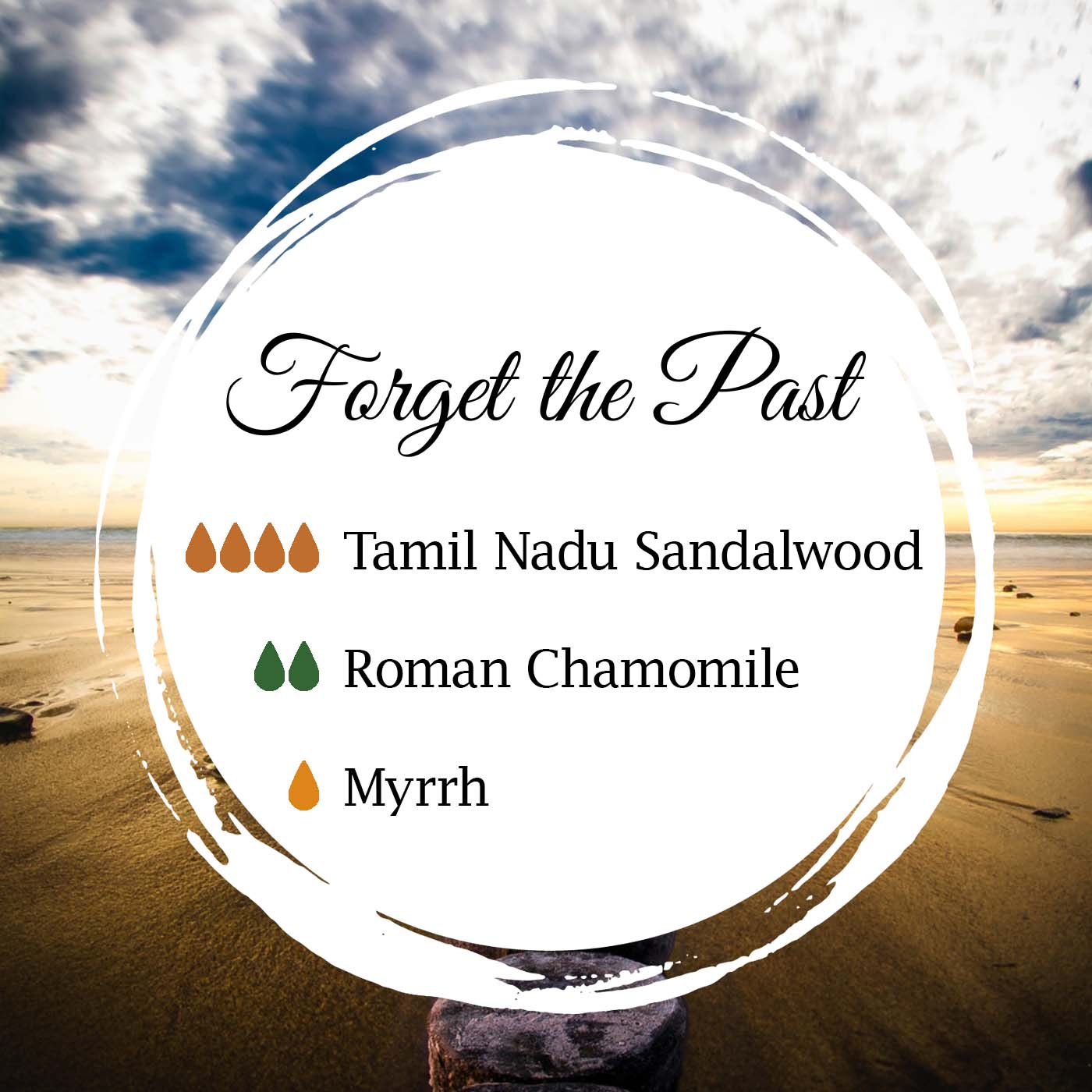This or That: Sandalwood — Australian or Tamil Nadu
Oct 5th 2023
Posted by Dr. Christoph Streicher and Linda J.
Treasured since the dawn of civilization, we know today that Sandalwood not only is the source of a time-honored, valuable oil, but is a formidable healing force. Sandalwood throughout time has been multi-purpose: nuts for food, oil for medicine, paste for cosmetics, scent for pleasure and wood for musical instruments. This sweet, creamy, woody scent is part of our collective consciousness, opening us up to meditative states as well as greater health and well-being.*
Alpha-santalol is the primary ingredient in Sandalwood, making it a key part of Ayurvedic medicine. It’s used to alleviate symptoms of the common cold, digestive problems and urinary tract infections.* As the paste and oil are coolants, the paste both dissipates heat and can be used cosmetically to enhance beauty.* The essential oil calms the mind and enhances mood.*
From the Santalaceae tree family, Sandalwood grows in the tropical forests of Southeast India, Asia and Australia. As you walk into the stillness under these trees, you will sense the whisper of dark green leaves rustling atop graceful, smooth dark trunks. Perhaps the plant itself inspired humans to explore its wonderful uses…let’s dig a little deeper into why Sandalwood is so beneficial!
Why you need Sandalwood: It’s all about the santalols
 Santalols occurs as several isomers,
phytochemical (plant) compounds, that are Sandalwood’s key components. Both
alpha and beta santalols reduce oxidative stress, otherwise known as aging!*
There are studies that indicate that these santalols, and more, also reduce
protein aggregation, which is associated with many of the diseases that can be
part of growing older, such as Alzheimer's and Parkinsons disease.* These
amazing plant compounds positively regulate our cells, reducing the cellular
wear and tear of life, extending our longevity.*
Santalols occurs as several isomers,
phytochemical (plant) compounds, that are Sandalwood’s key components. Both
alpha and beta santalols reduce oxidative stress, otherwise known as aging!*
There are studies that indicate that these santalols, and more, also reduce
protein aggregation, which is associated with many of the diseases that can be
part of growing older, such as Alzheimer's and Parkinsons disease.* These
amazing plant compounds positively regulate our cells, reducing the cellular
wear and tear of life, extending our longevity.*
As reported in the National Institutes of Health Library , Sandalwood’s benefits are multitudinous and are only now beginning to be fully known by scientists.* It is considered to have anti-inflammatory, anti-oxidant, and anti-microbial properties.* The main constituent, the sesquiterpene alpha-santalol, may have chemo-preventive effects, supporting the healthy life-cycle of our body’s cells.* In other words, Sandalwood, with further research, may prove to be able to slow the proliferation of cancer cells, specifically oral, breast, prostate and skin cancer.* Sandalwood is used now as an alternative topical treatment for skin disorders, such as fungal infections, psoriasis, herpes and warts.*
Sandalwood’s Illustrious History
Sandalwood has been revered for thousands of years. When Isis resurrected her husband Osiris, she wrapped him in linen bandages and used her magic powers to restore him to life.* We can imagine that Isis used Sandalwood in her potion to raise the dead.* Were you to step inside a pyramid in Egypt 3,000 years ago, you may have smelled Sandalwood burning.
Known as Chandana in Sanskrit, Sandalwood is a fundamental part of India’s mythology and culture, from ancient times up till today. The heartwood of the tree is considered sacred, and making Sandalwood paste is a prayerful ritual.
What is the difference between Santalum spicatum and Santalum album?
Amrita is proud to offer two types of Organic Sandalwood, one from Australia and one from India. Both are considered outstanding aromatherapeutic oils, with slightly different qualities and benefits. Both Indian and Australian Sandalwood trees are treasured, and both take about 20 years to be ready for harvest. Due to the high demand for both varieties, farmers now employ sustainable methods of producing and distilling Sandalwood essential oil, made from the trees’ heartwood.

|
 |
Santalum spicatum — is the variety found in Australia. Also known as the “Common” Sandalwood, it has a greener “top note” scent, and is known for calming the mind and awakening the body, making this Sandalwood a gentle aphrodisiac.* It also has powerful healing santalols, and was used by the indigenous peoples of Australia for millennia. Before the advent of antibiotics in the 1930’s, this Sandalwood was used as an antiseptic and as a treatment for bacterial infections of all kinds.*
Santalum album — is found in the tropics of India, primarily from the East Indian state of Tamil Nadu, and is known as White Sandalwood. This variety has a much higher level of the alpha santalol plant compound and so has a greater level of potential medical benefits. Its scent is considered more “raw,” tending toward earthier aroma tones.
Trying to figure out how to use Sandalwood? Here’s a cheat sheet!
As with any essential oil, it is key that you dilute it properly for topical application. Please follow our guidelines below when blending both varieties of Sandalwood:
- A popular way to administer both Santalum spicatum (Australian or Common Sandalwood) and Santalum album (Tamil Nadu “Indian” or White Sandalwood) varieties is to add them to pure Almond, Hazelnut, or Apricot Kernel Carrier Oil, then apply the blend topically. Add 10 drops of each to one ounce of your carrier oil.
- Consider blending each of these oils separately as well, and then decide which one works best for you. As a calming oil that inspires contemplation, both work beautifully. You may find that the Indian Oil is more potent for detoxing and healing the body and the Australian Oil for giving a sense of lightness and calm to the spirit.*
- When using any essential oil in a bath it is fun to experiment with techniques! You can drop the oil, just a few drops, into a warm bath, or blend the oil with an emulsifier (such as coconut oil or bath gel) or add it a cup of Epsom salts. Immersion in water calms the body, allowing for enhanced effect of the healing oils.
- When you use Sandalwood in a massage, your skin cells absorb the healing essence of the plant into your body.* Using Tamil Nadu Sandalwood would be good if you’ve been experiencing congestion or inflammation, while Australian Sandalwood would give an overall sense of ease, and may help heal certain skin problems such as psoriasis and dandruff.* Both Sandalwoods have been used to enhance hair growth, too!*
- Don’t forget one simple type of application: just a few drops of cooling Sandalwood, either variety, in a carrier oil, gently rubbed on the point between the eyebrows, is said to block negative thoughts and relieve headaches.*
What can I blend with Sandalwood?
Sandalwood can be blended with other oils in a carrier oil, in a 2% dilution (approx. 60 drops per ounce of carrier oil) or place a few drops of each in a diffuser and replenish as needed.
You can blend Australian Sandalwood with heartier oils such as Cedar Atlas and Roman Chamomile for an uplifting and soothing effect.* Try blending Tamil Nadu Sandalwood with Neroli is a time-honored formula for stress, reducing cortisol and lowering blood pressure.* To aid in releasing trauma, consider blending Tamil Nadu Sandalwood with Roman Chamomile and Myrrh Essential Oils.*

|
 |
Final Thoughts from Dr. Streicher and Amrita’s
Experts
When you use Sandalwood, you are truly bringing rituals and healing practices of the ancient world into your life. Today, modern science has confirmed that both the Tamil Nadu and Australian varieties of this tropical tree provide humanity with plant compounds that offer powerful medicine for us all. From preventing inflammation, infection and cancer to promoting inner peace and tranquility, Sandalwood deserves the reverence it has inspired for millennia!
Happy Blending!
*These statements have not been evaluated by the Food and Drug Administration. These products are not intended to diagnose, treat, cure, or prevent any disease.

